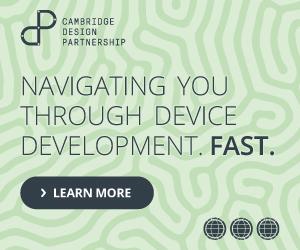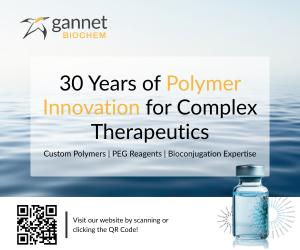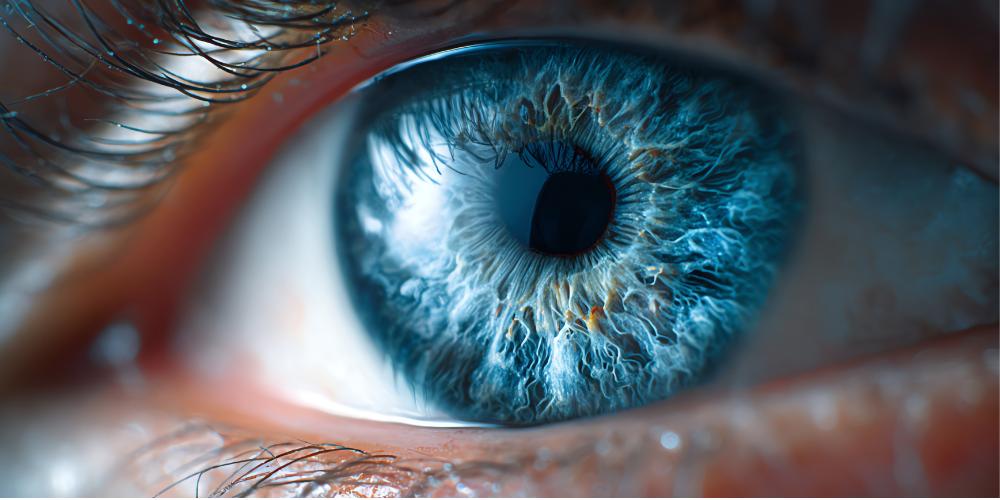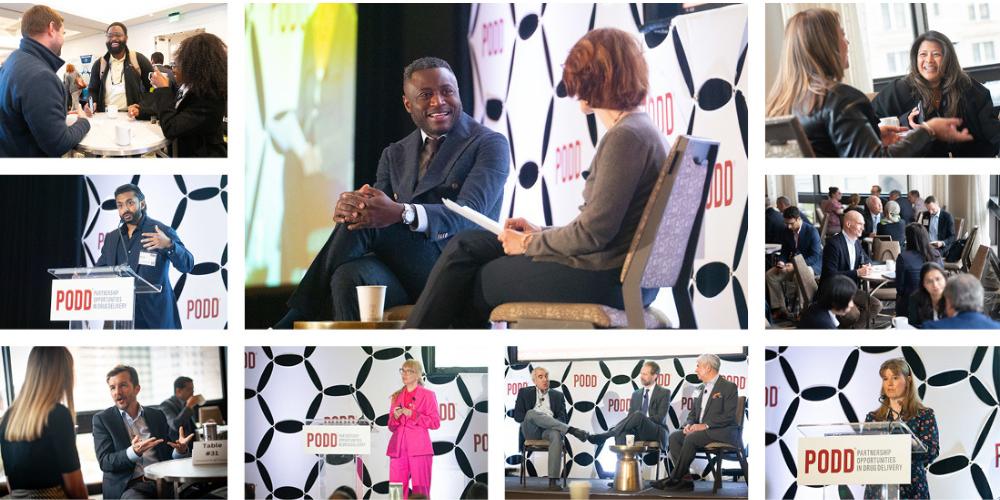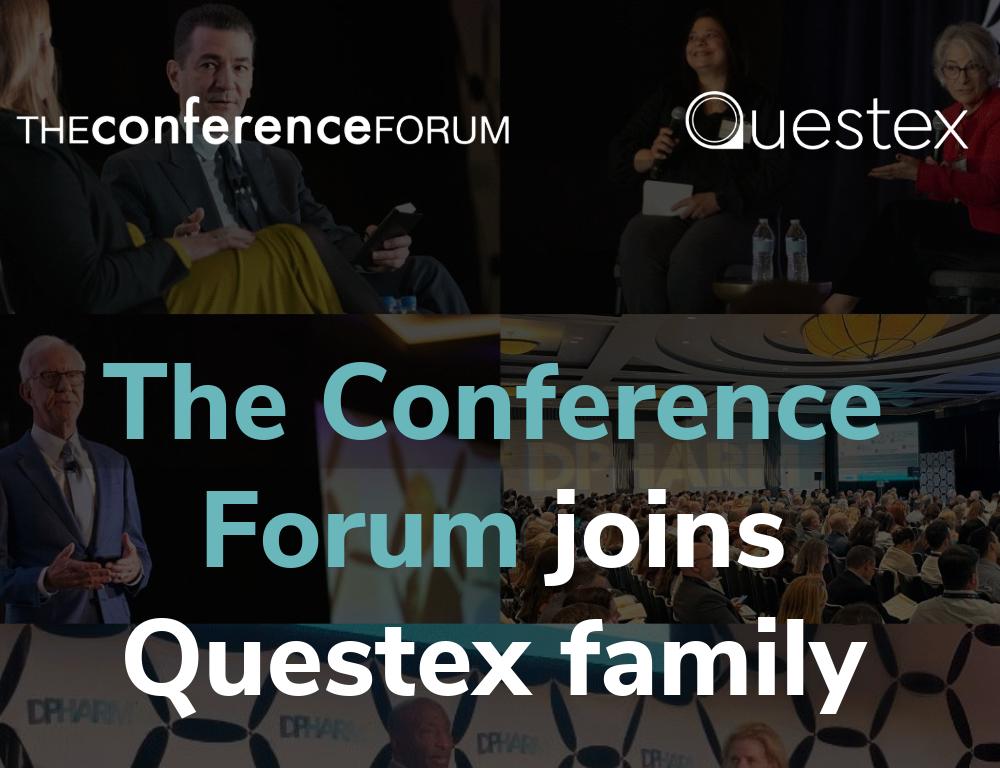How Teva Navigates Drug Delivery Partnerships in Combination Products
Mark DeStefano, Teva’s Director of Combination Products and Devices Research and Development, discusses the company’s recent partnerships, trending delivery technologies, and how to more effectively develop drug delivery devices to improve patient experience.

Tell us about Teva’s recent combination device approvals.
Teva received approval for Uzedy which is a long acting risperidone to treat schizophrenia. For this drug, Teva was looking for a way to improve the patient journey and outcomes for this specific patient population by developing a long acting formulation to help prevent relapse by reducing the need for frequent dosing, which can be a challenge since continued medication compliance can be very difficult for people with schizophrenia. The Medincell BEPO depot formulation technology provided the necessary backbone to meet the goals of this product which helped drive the partnership with MedinCell.
However, this depot formulation also presented device challenges. It was a high viscosity depot formulation, at approximately 800-1,000 centipoise, so it was more like a paste. Because of that, we had several human factors challenges relative to utilizing a prefilled syringe configuration including assessing the force required to deliver the dose and the need to create unique user preparation instructions since the configuration utilized a luer type PFS. With this type of PFS, removal of the luer cap prior to needle attachment can create a vacuum and cause loss of drug prior to dose delivery. We had to create a new preparation method and instruction set with graphics to show users how to remove the tip cap properly. We then ran human factors studies to ensure proper and acceptable usability by the user – in this case health care providers – who have their own specific knowledge bias when it comes to syringe preparation.
We have also had a few recent biosimilar approvals in our Simlandi and Selarsdi products which are combination products developed through our partnership with Alvotech. The Simlandi autoinjector device was developed with some unique characteristics to maximize usability in the form of the unique external device shape configuration optimized for Rheumatoid Arthritis patients.
"The goal is for patients to have the optimal user experience with any device."
How do you think about which changes need to be made?
Any time you have a new drug or formulation methodology or patient population you must consider the impacts on the delivery device technology: Does it have to change? Is it a technology change? Is it a mechanical performance change? Or is it a usability change?
We do early research, feasibility testing, usability testing and manufacturability evaluation upfront within the device development lifecycle so that we have different options with which to work through our development and manufacturing processes. We get all the stakeholders together to determine what device would be most beneficial to meet the user needs, what technology creates the least impact and risk on development and manufacturing and what best addresses commercial needs. We consider this in a broad portfolio fashion not just based on an individual drug program. We then come up with a few solutions and execute fast functional feasibility and usability testing initiatives with those device technologies and patient populations to ensure device functionality – preferably from a platform device – and test usability with actual human subjects along with assessing user preferences and confirming any preferences or insights provided. The goal is for patients to have the optimal user experience with any device.
How does user experience factor into these decisions?
You need to understand not only the formulation needs but all the user needs as well. Who is the user population? What limitations or issues does that population have? How significant of a change is needed to be beneficial for that user population? And then, what impact do those potential changes have to the device or platform device technology? There are several paths you can go down when you talk about how to implement device changes relative to a specific user population.
Sometimes a significant change is needed, like changing structural or functional components of the device, and other times you may just need to change the exterior shape of the device. For an exterior shape change redesign of the device exterior may be needed or you may be able to use an add-on component instead of redesigning the entire outer housing. For instance, in our Simlandi product, which is an adalimumab biosimilar, our partner chose to go down the path of putting a different outer housing shape on an existing device platform technology to give it a more oval shape and create a brand look for the device. This was considered advantageous for Rheumatoid Arthritis patients as the housing also added a soft texture area for improved grip based on an understanding of the specific user needs.
That was a relatively significant change to the platform because it required new mold tooling even though the internal structure and function of the platform was unchanged. Changing the external shape through the use of an add-on component, if feasible, may provide a lower risk because you may just need to pass a few key verification tests such as drop testing and confirm no difference in functional delivery performance along with usability testing. Every change will come with varying levels or complexity that must be assessed relative to determining the final device configuration and impact to timelines. The key is to focus on optimal usability and user experience and not simply timelines.
Cosmetic or shape change viability also depends on how easy it is to integrate the change into any technology and perhaps manufacturing operations. For example, does the change alter the shape of the device, which then impacts both the pre and post fill manufacturing assembly systems and also labeling of the final device? How would any add-on accessory impact collateral device attributes such as sound, feel and visual inspectability? Any changes could lead to significant impacts in a platform device including the need for manufacturing systems, new labeling and packaging configurations and equipment.
"Don’t wait until you need something to start searching because you’ll be under pressure. You’ll end up choosing based on schedule and not based on best technology or user experience."
What is your advice for pharma companies looking for partnerships with drug delivery companies?
The best way for pharma companies to engage is to first make sure you know the technologies that are out there. Don’t wait until you need something to start searching because you’ll be under pressure. You’ll end up choosing based on schedule and not based on best technology or user experience. This can lead to a less than optimal product in the end.
Stay ahead of device technology development and industry trends and changes. Look for technology disruptors who can open new opportunities previously not considered. Always keep an eye on the landscape of what is coming out. Who is doing what and who is working with different technologies? What are each of these partners working on for current and next generation devices? How can we leverage that? Is there a benefit? This will allow you to evaluate which technology best fits an application when the need arises and also allows you to build relationships with those partners. If you build those relationships too late, everybody is under the gun relative to schedule, and it is then easy to miss critical issues. If you build those relationships early enough with different partners, you can determine who will provide the best technology and the best partnership for a particular asset at the right time.
Look to build strong and transparent relationships with external partners as early as possible so that there is a high level of trust and information sharing early on in any device effort. Do not overlook the value of sharing device data and information to help benefit the entire industry and ultimately the end user. Also do a full partner assessment – design and operations – to look for partners who are competent, reliable, flexible and have a good track record of meeting goals, timelines and cost targets and who understand the constraints of a pharma company.
Also, look for companies that are delivering not just a device technology, but also turnkey solutions for device assembly at the fill-finish location. Device suppliers who have considered and planned for the entire device ecosystem – from components production through subsystem assembly through to final post fill assembly and packaging – and that understand the big picture and challenges that a pharma company faces when implementing device technology will have a distinct advantage in the future to those who simply are component suppliers.
What about engaging with companies about next generation approaches?
Pharma device teams also need to think about what future formulations could be coming down the pipeline in the future – not just what they are working on today. From hydrogels that can go in as a liquid and then convert to a scaffold at body temperature to embedding high concentration drugs into lipid nanoparticles, new formulation technologies are going to be beneficial in the future and you need to understand them from a drug delivery and device standpoint much sooner than traditionally done as the complexity in delivering these next generation formulations may be larger than are anticipated. Don’t wait until one shows up in the later stages of a drug program to try to figure out what to do with it, understand and follow these technologies now and determine what device manufacturers have available to support these technologies or what may need to be invented. Look for partners who are actively looking at or engaged in developing solutions for this emerging space.
If you don’t see a technology that you may need out there, approach the device companies or identify highly experienced device developers who are willing to do development as early as possible. These partners may be willing to develop technologies from their own perspective to develop the next-level platform for themselves to be able to offer it to multiple pharma partners. This trend has been growing as evidenced by the large volume wearable injector space. Development partners can only develop based on what they know, and they probably know less about the needs and status of future formulation technologies than the pharma companies. If these device companies see a trend of people asking for similar delivery technologies, they are more likely to invest in the development of a base platform.
"If you don’t see a technology that you may need out there, approach the device companies or identify highly experienced device developers who are willing to do development as early as possible."
What are your thoughts on formulation versus device approaches to balancing concentration and volume?
When you get into high concentration formulations, you enter a new category of risk. For instance, when you suspend a powder into an emulsion, or create any non-homogenous mixture, you could potentially get needle clogging, not to mention the viscosity increase that typically occurs. Once you create a high concentration formulation, you need to consider downstream impacts. Formulators usually consider how to get the formulation stable and not how different formulations and storage conditions may affect the device over shelf life. Device teams need to bring that piece of the puzzle to the table and consider whether the formulation will aggregate and how to inject the drug effectively. In addition, there will be new drug manufacturing challenges for these new formulation methodologies that will also need to be overcome and could require significant capital investment.
Today we can already leverage on-body injectors and other large volume injectors to deliver high drug payloads such that high concentration formulations may not be immediately required. Consider it a form of lifecycle planning or progression. But as with any device technology change, there is hesitancy in adopting a new device technology within pharma companies. While pharma is risk averse about new technologies, patients don’t mind wearing a device for 10 or 20 minutes especially if it allows for less frequent injections per year. People are used to seeing and wearing technology like continuous glucose monitors or fitness monitors. Approaching these challenges with device solutions could mean that you don’t need to reformulate, which can cost a lot of money and take significant time. If you make the device technology easy to use, patients won’t have a problem with it.
At the end of the day there will be opportunities for both new device and formulation technologies and the direction should be to leverage the right tool for the right application, not just to focus on the tool that you know best and try to use it as a solution for everything.
How can companies best leverage digital health technologies to improve patient engagement and patient education?
There are a lot of different types of digital health technologies, from very simple to highly complex, that can be leveraged to understand how people are using devices and how devices are performing to create a best usability scenario for the end user and provide “valuable” feedback to the user. The key is to define “valuable“ in the context of the therapeutic area and user population as data overload is easy to achieve. For example, more critical emergency applications may provide a better opportunity for digital initiatives versus non-critical preventative medications. In this area, I believe we could take great cues from the consumer electronics space.
One example of leveraging digital technologies in general is where you can utilize digital measures to capture device use information in real time while actively having users engage with technology and directly see the results. This creates an interactive learning experience and direct engagement with the user. For instance, you can give users prefilled syringes with different viscosities and not only get digital feedback for how that device is performing but also obtain the user’s feedback at the same time and then show the comparative information to the user.
There are also other opportunities to use digital technologies in training products and devices to help users optimize their device utilization experience and to provide feedback to developers of potential use errors and challenges with a device. In this area of patient education, which I see expanding, constantly looking for ways to improve and measure the educational experience and training outcome is extremely important to develop the optimal user training to produce the best device use outcomes.
Another example of where digital technology can aid device engineers to develop a device is using accelerometers to understand how people are manipulating a device such as an autoinjector. Are they holding it down the way they should? Are they moving their hand in any form or fashion? This could be a way to get quantitative data from a usability study that may be beneficial down the road to a device design, training or implementation.
The other way that digital health can be extremely beneficial is to integrate targeted digital technologies and connectivity into your clinical development platforms and clinical trials. This can not only provide you with new quantitative biomarker data outside the traditional methods, reduce patient numbers and accelerate your trials, but with these technologies you can collect continuous real-time data versus snapshot data, and you can increase patient engagement by providing them with real-time feedback of their condition as the trial progresses. For instance, for someone with motion disorders, an accelerometry-based device can show them that their motions are getting less sporadic as they take their medication which creates patient engagement. Once you have leveraged a technology in a clinical setting then you can see if this creates an opportunity or value for a custom device, application or companion device to be leveraged commercially.
Contrary to what some might think, people don’t necessarily want to be connected with every device they come in contact with. Many people use an app a couple of times before dumping it, and studies have shown that in most cases app use drops off sharply within the first few weeks or months, except perhaps those that provide user entertainment or news. This is even more true for preventative medicines, where most users don’t want to be reminded that they have a medical condition, they just want to be healthy and live a “normal” life. While pharma companies and doctors might find the data interesting, users may not. And that data comes with cost and overhead that may be unnecessary in many situations. This is where the use of those digital technologies earlier in clinical applications can help companies determine if they should be part of the end product or if they're just for clinical/developmental use and data collection.
The areas where users may stay more engaged with digital technology are the critical care and emergency medication space where compliance is more critical, or the impacts of the condition are felt more quickly. The type 1 diabetes space is a good example of digital technology utilization that significantly improves your quality of life and can reduce long term collateral conditions.
"It’s important to get the proper device technology into people’s hands so that we can better deliver drugs to patients."
How is Teva working towards sustainability throughout drug delivery device development?
Other than our manufacturing operations where everybody’s trying to go green, when it comes to actual devices, we are mostly focused on where we have the highest volume and impact, which is in the inhalation propellant space where we utilize gas canisters containing propellants that are not all totally eco-friendly. We are trying to get away from ozone depleting mixtures in the canisters for inhalation.
As we start increasing the devices in our portfolio, we are following the footsteps of other companies by engaging with device companies to ask how we can develop better biodegradable materials and how we can minimize the amount of material we are using in a device. For instance, we can look at leveraging simulation technologies to test the impact of reducing the amount of plastic in parts. Based on those simulations perhaps we can reduce plastic use in a device by maybe 20-30% without impacting performance and reliability.
We also follow manufacturers and try to see where they are going relative to zero-emissions type applications. We want to see if we can use those devices even if there is a slight premium in the cost. Ideally, once the zero initiatives have been implemented for years, the cost impact should be negligible.
What new therapeutics and delivery innovations are you most excited about?
I am interested in targeted therapeutics. For example, biodegradable hydrogel technology for oncology applications as a way to retain drug into a tumor but with total scaffold absorption over time eliminating any residual implant material. Injecting liquid into a tumor sometimes doesn’t spread very well and it can leak back from the injection opening as some tumors tend to have a firmer tissue composition. Hydrogel technology could create a good distribution of drug in this type of tumor.
We are also following technology to deliver large molecules into the nasal cavity. You can deliver nasal technologies into different lobes of the sinuses where the drug can be absorbed more freely without needing to go into the lung space. This may be an interesting approach to rapidly delivering targeted biologics or other therapeutics.
I’m also curious to see where transdermal technologies go as these may be easy to use in some situations. There are some applications where I have seen a device technology that can get drug below the surface of the skin without microneedles.
For ophthalmic use, there is a product called Optejet that you hold up to your eye which can spray micronized mist of drug onto your eye, and you don’t even notice it. Unlike an eye drop which typically is roughly 40uL this device delivers a directed 8uL dose. It’s much better at giving a metered dose without all the excess liquid that drips out of your eye and is lost. These innovations can greatly improve the user experience while controlling the drug dose volume and reducing drug loss.
Are there any device technologies you’re especially interested in?
I am personally interested in dual drug delivery devices. I’m seeing formulations that are now being partnered, like a combination therapy in oncology, and a dual drug delivery device can deliver them either mixed or co-injected. We’ve had reconstitution devices for years but the need for newer dual drug delivery devices for liquid-liquid formulations is going to start to increase with combo therapies as we find more benefits of combining two medications in an application to create an effective “bi-therapy,” as opposed to monotherapy. There’s already an application in Parkinson’s disease for a dual liquid chamber device, and there are now inhaled dual formulation therapies that are changing the game a bit. So I do see more opportunities for this kind of dual therapy approach in the future.
Another area of interest is very controlled intratumoral microdosing, with single or multiple drugs, for select oncology applications. This may help reduce systemic therapies that have well known side effects There is some technology developing in this space that could be of interest.
In the area of sensing, the ability to sense skin surface conditions to perhaps measure wound healing or detect cancerous cells on the skin surface are areas that are also of interest to me.
Any concluding thoughts?
It is very exciting to play in this space right now. Pharma companies need to build internal strong but efficient device teams that have expertise in the appropriate technology or engineering areas and who can work closely with partners to bring forth the best device technologies.
Partnerships create a great opportunity to not only get ahead but also drive innovation and leverage large teams of expertise. Leveraging our partnerships, we are now doing work at Teva that Teva most likely would not have done on its own relative to device development and innovation several years ago. This work is beneficial to Teva and beneficial to patients. It’s important to get the proper device technology into people’s hands so that we can better deliver drugs to patients. The goal is to make sure that patients have the optimal user experience and can get their drugs easily and effectively.




